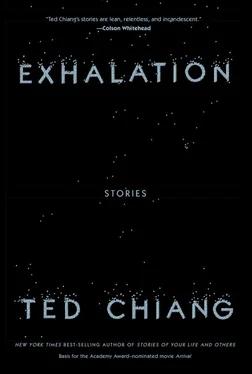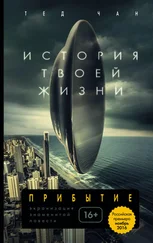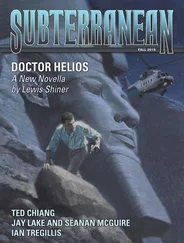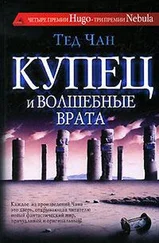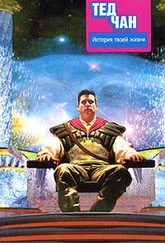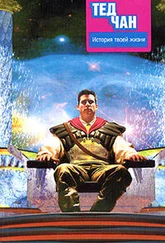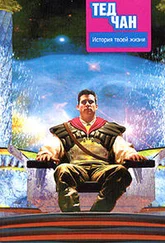In the intervening years, our field has advanced to the point where anatomists are able to repair damaged limbs and, on occasion, attach a severed limb. At the same time we have become capable of studying the physiology of the living; I have given a version of that first lecture I saw, during which I opened the casing of my own arm and directed my students’ attention to the rods that contracted and extended when I wiggled my fingers.
Despite these advances, the field of anatomy still had a great unsolved mystery at its core: the question of memory. While we knew a little about the structure of the brain, its physiology is notoriously hard to study because of the brain’s extreme delicacy. It is typically the case in fatal accidents that, when the skull is breached, the brain erupts in a cloud of gold, leaving little besides shredded filament and leaf from which nothing useful can be discerned. For decades the prevailing theory of memory was that all of a person’s experiences were engraved on sheets of gold foil; it was these sheets, torn apart by the force of the blast, that were the source of the tiny flakes found after accidents. Anatomists would collect the bits of gold leaf—so thin that light passes greenly through them—and spend years trying to reconstruct the original sheets, with the hope of eventually deciphering the symbols in which the deceased’s recent experiences were inscribed.
I did not subscribe to this theory, known as the inscription hypothesis, for the simple reason that if all our experiences are in fact recorded, why is it that our memories are incomplete? Advocates of the inscription hypothesis offered an explanation for forgetfulness—suggesting that over time the foil sheets become misaligned from the stylus which reads the memories, until the oldest sheets shift out of contact with it altogether—but I never found it convincing. The appeal of the theory was easy for me to appreciate, though; I too had devoted many an hour to examining flakes of gold through a microscope and can imagine how gratifying it would be to turn the fine-adjustment knob and see legible symbols come into focus.
More than that, how wonderful would it be to decipher the very oldest of a deceased person’s memories, ones that he himself had forgotten? None of us can remember much more than a hundred years in the past, and written records—accounts that we ourselves inscribed but have scant memory of doing so—extend only a few hundred years before that. How many years did we live before the beginning of written history? Where did we come from? It is the promise of finding the answers within our own brains that makes the inscription hypothesis so seductive.
I was a proponent of the competing school of thought, which held that our memories were stored in some medium in which the process of erasure was no more difficult than recording: perhaps in the rotation of gears, or the positions of a series of switches. This theory implied that everything we had forgotten was indeed lost, and our brains contained no histories older than those found in our libraries. One advantage of this theory was that it better explained why, when lungs are installed in those who have died from lack of air, the revived have no memories and are all but mindless: somehow the shock of death had reset all the gears or switches. The inscriptionists claimed the shock had merely misaligned the foil sheets, but no one was willing to kill a living person, even an imbecile, in order to resolve the debate. I had envisioned an experiment which might allow me to determine the truth conclusively, but it was a risky one, and deserved careful consideration before it was undertaken. I remained undecided for the longest time, until I heard more news about the clock anomaly.
Word arrived from a more distant district that its public crier had likewise observed the turret clock striking the hour before he had finished his new year’s recital. What made this notable was that his district’s clock employed a different mechanism, one in which the hours were marked by the flow of mercury into a bowl. Here the discrepancy could not be explained by a common mechanical fault. Most people suspected fraud, a practical joke perpetrated by mischief-makers. I had a different suspicion, a darker one that I dared not voice, but it decided my course of action; I would proceed with my experiment.
The first tool I constructed was the simplest: in my laboratory I fixed four prisms on mounting brackets and carefully aligned them so that their apexes formed the corners of a rectangle. When they were arranged thus, a beam of light directed at one of the lower prisms was reflected up, then backward, then down, and then forward again in a quadrilateral loop. Accordingly, when I sat with my eyes at the level of the first prism, I obtained a clear view of the back of my own head. This solipsistic periscope formed the basis of all that was to come.
A similarly rectangular arrangement of actuating rods allowed a displacement of action to accompany the displacement of vision afforded by the prisms. The bank of actuating rods was much larger than the periscope but still relatively straightforward in design; by contrast, what was attached to the end of these respective mechanisms was far more intricate. To the periscope I added a binocular microscope mounted on an armature capable of swiveling side to side or up and down. To the actuating rods I added an array of precision manipulators, although that description hardly does justice to those pinnacles of the mechanician’s art. Combining the ingenuity of anatomists and the inspiration provided by the bodily structures they studied, the manipulators enabled their operator to accomplish any task he might normally perform with his own hands, but on a much smaller scale.
Assembling all of this equipment took months, but I could not afford to be anything less than meticulous. Once the preparations were complete, I was able to place each of my hands on a nest of knobs and levers and control a pair of manipulators situated behind my head and use the periscope to see what they worked on. I would then be able to dissect my own brain.
The very idea must sound like pure madness, I know, and had I told any of my colleagues, they would surely have tried to stop me. But I could not ask anyone else to risk themselves for the sake of anatomical inquiry, and because I wished to conduct the dissection myself, I would not be satisfied by merely being the passive subject of such an operation. Auto-dissection was the only option.
I brought in a dozen full lungs and connected them with a manifold. I mounted this assembly beneath the worktable that I would sit at and positioned a dispenser to connect directly to the bronchial inlets within my chest. This would supply me with six days’ worth of air. To provide for the possibility that I might not have completed my experiment within that period, I had scheduled a visit from a colleague at the end of that time. My presumption, however, was that the only way I would not have finished the operation in that period would be if I had caused my own death.
I began by removing the deeply curved plate that formed the back and top of my head; then the two, more shallowly curved plates that formed the sides. Only my faceplate remained, but it was locked into a restraining bracket, and I could not see its inner surface from the vantage point of my periscope; what I saw exposed was my own brain. It consisted of a dozen or more subassemblies, whose exteriors were covered by intricately molded shells; by positioning the periscope near the fissures that separated them, I gained a tantalizing glimpse at the fabulous mechanisms within their interiors. Even with what little I could see, I could tell it was the most beautifully complex engine I had ever beheld, so far beyond any device man had constructed that it was incontrovertibly of divine origin. The sight was both exhilarating and dizzying, and I savored it on a strictly aesthetic basis for several minutes before proceeding with my explorations.
Читать дальше
